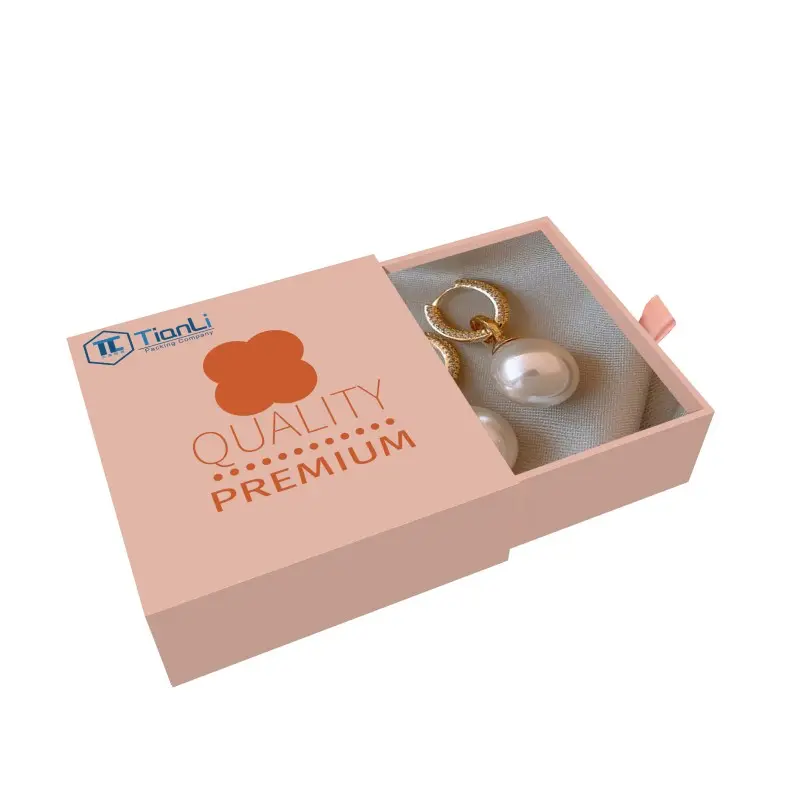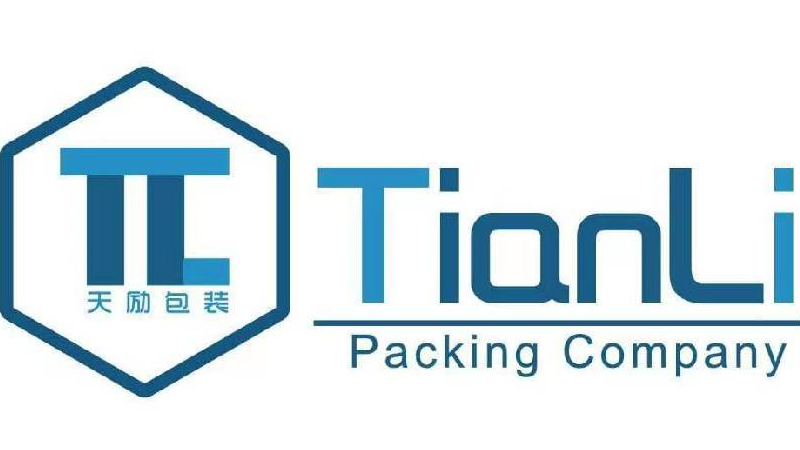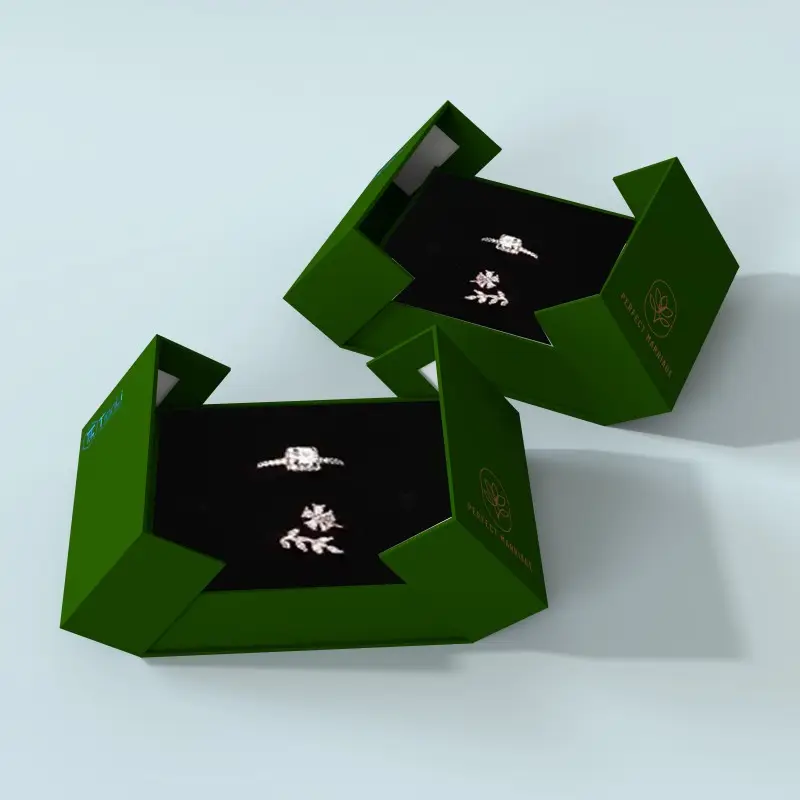Considérations essentielles pour un emballage haut de gamme
Choisir le parfait boîte en papier le choix d'une boîte en papier pour bijoux ou cosmétiques est une décision cruciale qui peut fortement influencer la perception de votre marque et la protection de vos produits. L'emballage adéquat protège non seulement les articles délicats, mais crée également une expérience de déballage mémorable, renforçant ainsi la satisfaction client. Sur un marché concurrentiel actuel, l'emballage joue le rôle d'ambassadeur silencieux de votre marque, ce qui rend le processus de sélection particulièrement important pour des articles de luxe tels que les bijoux et les cosmétiques.
Lors du choix d'une boîte en papier pour des produits de bijouterie ou cosmétiques, plusieurs facteurs entrent en jeu, de la qualité du matériau à l'esthétique du design. Le secteur de l'emballage a considérablement évolué, offrant des solutions innovantes qui allient fonctionnalité et durabilité, garantissant ainsi que vos produits arrivent en toute sécurité tout en laissant une impression durable sur vos clients.
Choix des matériaux et normes de qualité
Types de papier haut de gamme et leurs propriétés
La base de toute excellente boîte en papier pour bijoux commence par le choix du matériau approprié. Le carton de haute qualité, généralement compris entre 250 et 350 g/m², offre un équilibre parfait entre solidité et élégance. Les papiers couchés assurent une protection supérieure contre l'humidité et l'usure, tandis que les options texturées comme les papiers finition lin ou feutre ajoutent une dimension tactile à l'expérience d'emballage.
Pour l'emballage des cosmétiques, il est essentiel de tenir compte de la résistance chimique et des propriétés protectrices. De nombreux fabricants optent pour des papiers spéciaux dotés de revêtements protecteurs qui empêchent la migration des huiles et préservent l'intégrité du produit. Le matériau doit également être suffisamment robuste pour résister aux conditions d'expédition tout en conservant son attrait esthétique.
Solution d'emballage durable
La prise de conscience environnementale est devenue un facteur important dans les décisions d'emballage. Les papiers certifiés FSC, les matériaux recyclés et les options biodégradables sont des choix de plus en plus populaires auprès des consommateurs soucieux de l'environnement. Ces alternatives durables réduisent non seulement l'impact écologique, mais renforcent également la réputation de la marque à une époque où la durabilité compte.
De nombreuses marques de luxe intègrent désormais des éléments écologiques dans leurs emballages sans compromettre la qualité ou l'apparence. Cela inclut l'utilisation d'encres à base de soja, de revêtements à base d'eau et la réduction au minimum des matériaux d'emballage superflus, tout en maintenant des normes de qualité élevées.
Éléments de conception et considérations structurelles
Construction de la boîte et caractéristiques de protection
L'intégrité structurelle d'une boîte en papier destinée aux bijoux ou aux cosmétiques est primordiale. Des coins renforcés, une construction à double paroi et un dimensionnement adéquat garantissent que les produits restent sécurisés pendant le transport et le stockage. Des inserts personnalisés, des rembourrages et des compartiments offrent une protection supplémentaire tout en assurant une présentation organisée.
Pour les boîtes à bijoux, il convient de prendre en compte des caractéristiques spécifiques telles que des rouleaux pour bagues, des crochets pour colliers ou des supports pour boucles d'oreilles. De même, l'emballage cosmétique nécessite souvent des considérations particulières selon les tailles et types de produits, afin que tout reste bien en place et protégé.
Options d'amélioration esthétique
L'attrait visuel joue un rôle crucial dans l'emballage de luxe. Des techniques de finition telles que le marquage à chaud, le gaufrage et le vernis UV sélectif peuvent rehausser l'apparence de votre boîte en papier. Ces éléments décoratifs améliorent non seulement l'attrait visuel, mais offrent également des expériences tactiles qui renforcent la position de luxe de la marque.
Le choix des couleurs doit s'aligner sur l'identité de votre marque tout en tenant compte d'aspects pratiques. Les couleurs foncées peuvent montrer plus facilement les signes d'usure, tandis que les teintes claires peuvent mettre en évidence les empreintes digitales. Une approche équilibrée prenant en compte à la fois l'esthétique et la praticité est essentielle pour une conception d'emballage réussie.

Optimisation de la taille et de la fonctionnalité
Planification dimensionnelle
Le dimensionnement approprié est crucial tant pour la protection du produit que pour l'efficacité des coûts. Une boîte en papier pour bijoux doit offrir un espace suffisant pour l'article tout en minimisant les mouvements. Pour les produits cosmétiques, prendre en compte les dimensions standard des produits ainsi que les combinaisons possibles permet d'optimiser la taille des boîtes pour différents références (SKUs).
La relation entre les dimensions internes et externes doit être soigneusement planifiée afin d'incorporer d'éventuels éléments de protection tout en conservant une apparence élégante. Cela implique de prévoir un espace pour les matériaux amortissants sans que l'emballage paraisse surdimensionné ou superflu.
Mécanismes d'ouverture et expérience utilisateur
La manière dont une boîte s'ouvre et se ferme peut influencer considérablement l'expérience utilisateur. Les fermetures magnétiques, les tirettes en ruban et les mécanismes coulissants peuvent ajouter une touche de sophistication aux écrins à bijoux. Pour les produits cosmétiques, des aspects pratiques tels qu'un accès facile et la possibilité de refermer l'emballage sont essentiels pour une utilisation quotidienne.
Envisagez comment l'expérience de déballage peut être améliorée grâce à des éléments de conception réfléchis. Une séquence d'ouverture bien conçue peut susciter de l'anticipation et de l'excitation, transformant un simple emballage en une expérience mémorable.
Questions fréquemment posées
Quelle grammage de papier est le plus adapté pour les écrins à bijoux de luxe ?
Pour les écrins de luxe, un grammage compris entre 300 et 350 g/m² est généralement recommandé. Cela assure une rigidité et une durabilité suffisantes tout en conservant une impression de qualité supérieure. Le grammage exact peut varier selon les exigences spécifiques de conception et les traitements de finition.
Comment puis-je m'assurer que mon emballage cosmétique est respectueux de l'environnement ?
Pour garantir un caractère écologique, choisissez des papiers certifiés FSC, utilisez des encres à base de soja et privilégiez des matériaux recyclables. Envisagez des designs minimalistes afin de réduire la consommation de matière et préférez des éléments de protection biodégradables lorsque possible. Il est également essentiel de collaborer avec des fabricants qui accordent la priorité aux pratiques durables.
Quelles caractéristiques de protection l'emballage d'un écrin à bijoux doit-il inclure ?
Les caractéristiques de protection essentielles pour les boîtes à bijoux comprennent une doublure intérieure souple, des systèmes de fermeture sécurisés et des compartiments ou inserts sur mesure. Envisagez d'ajouter des propriétés anti-oxydation aux matériaux intérieurs et assurez-vous que les coins sont renforcés pour éviter les dommages pendant l'expédition et la manipulation.
Comment choisir la bonne taille pour mon emballage cosmétique ?
Lors du choix des tailles d'emballage cosmétique, tenez compte des dimensions de votre produit ainsi que d'un espace supplémentaire pour les éléments de protection. Prenez en compte les besoins éventuels d'emballage secondaire, les considérations liées à l'expédition et les exigences de présentation en magasin. Il est recommandé d'établir une matrice de tailles pour votre gamme de produits afin d'assurer cohérence et efficacité.
Table des Matières
- Considérations essentielles pour un emballage haut de gamme
- Choix des matériaux et normes de qualité
- Éléments de conception et considérations structurelles
- Optimisation de la taille et de la fonctionnalité
-
Questions fréquemment posées
- Quelle grammage de papier est le plus adapté pour les écrins à bijoux de luxe ?
- Comment puis-je m'assurer que mon emballage cosmétique est respectueux de l'environnement ?
- Quelles caractéristiques de protection l'emballage d'un écrin à bijoux doit-il inclure ?
- Comment choisir la bonne taille pour mon emballage cosmétique ?

